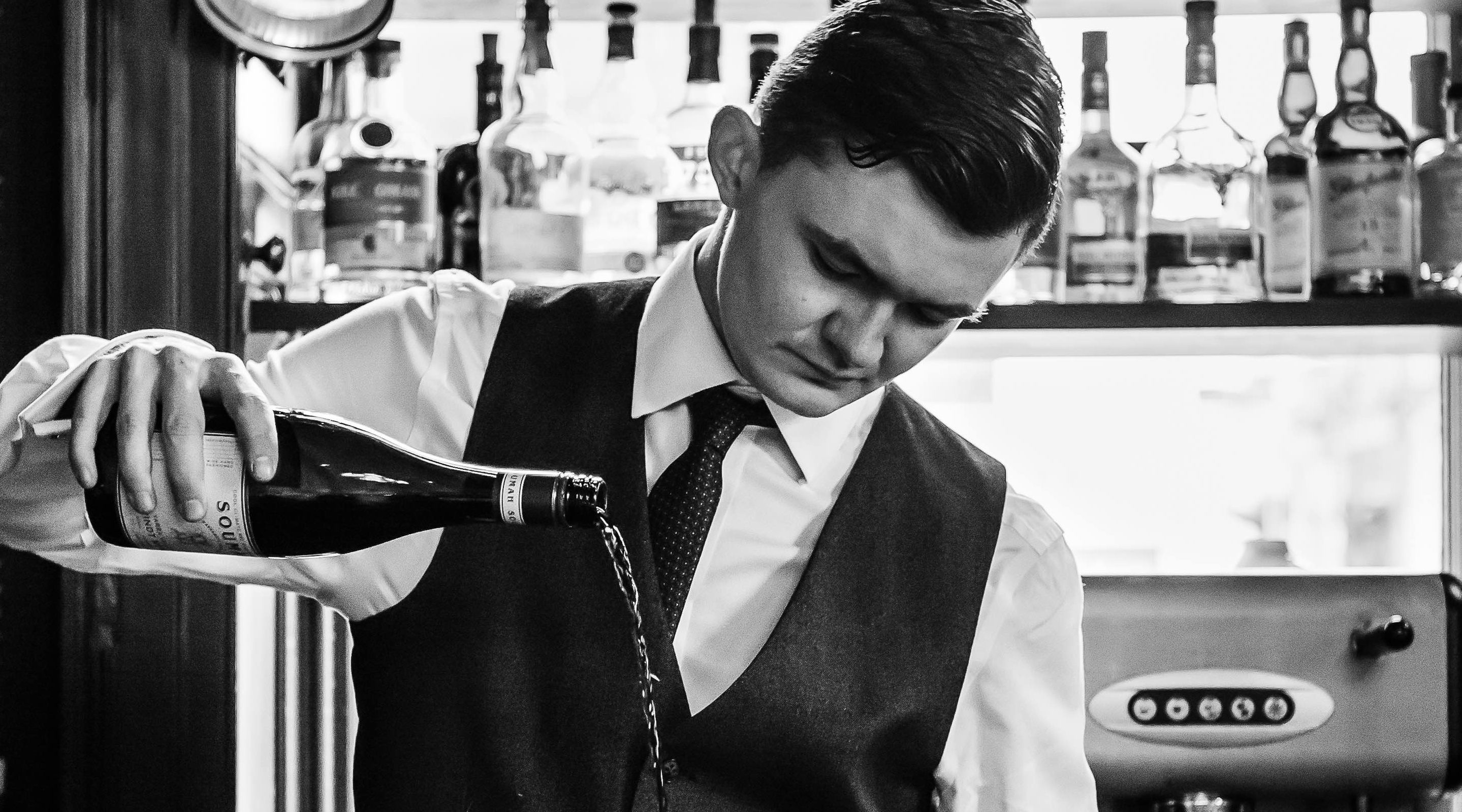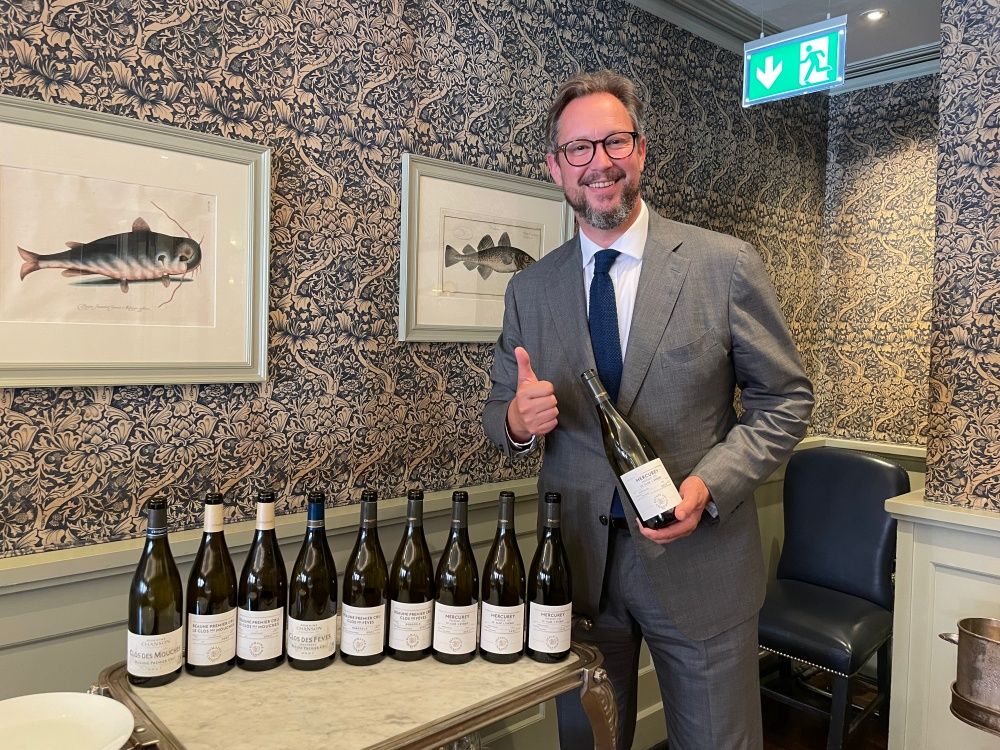Edinburgh’s Restaurant Mark Greenaway continues to pick up awards. It was named 13th in the UK by Square Meal in their 2016 list of top 100 restaurants, and runner up for Best restaurant in the Observer Food Monthly three times. So quite a challenge for sommelier Jack Dickinson to preside over its wine and drinks list.
Situated in a Georgian house in Edinburgh’s New Town, Restaurant Mark Greenaway’s elegant main dining room is high ceilinged, decorated in moody shades of petrol blue, with a stunning fanlight window flooding the room with watery Edinburgh sunshine.

Jack Dickinson, Mark Greenaway’s young sommelier, at the restaurant’s bar
Dickinson, a softly spoken Highlander who was born and brought up in the small village of Garve north of Inverness, studied nutrition at Queen Margaret’s University in Edinburgh. To supplement his income he took a part time bar job and then followed his boss to the city’s Hotel Du Vin where he stayed for two years when he was offered the sommelier’s post at Restaurant Mark Greenaway.
“It’s a drastically different calibre of restaurant, with three rosettes and many accolades, so a considerable jump up from Hotel du Vin,” says Dickinson.
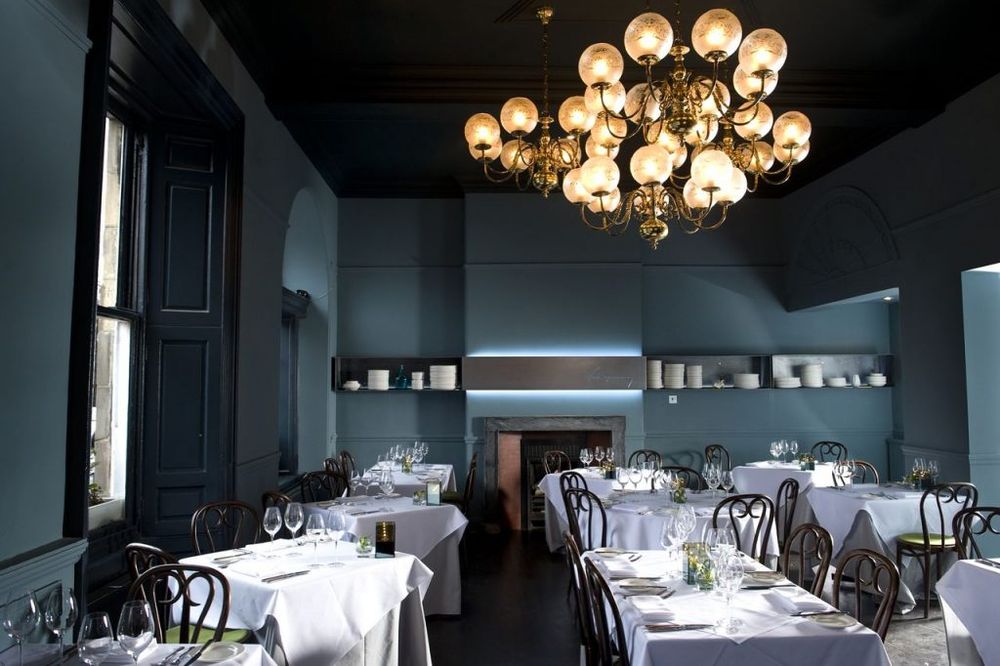
Restaurant Mark Greenaway is situated in an elegant Georgian building in Edinburgh’s New Town
So since his arrival in February 2016, how has he made his mark on the wine list? “When I arrived, there were around 80 wines; now there are about 175,” he says.
But it’s not just about including any wines that take his fancy, though admits to including some of his personal favourites. He says there are some wines on the list that may not necessarily be an ideal match with chef Mark Greenaway’s food, which he describes as being defined by “balance and finesse”, but nonetheless he continues to list them because customers expect it. “There is still demand for wines such as expensive Amarones and left bank Bordeaux,” he confirms.
Old and New World balance
The current list leans towards the Old World, says Dickinson, though the New is still well represented. “It is a constantly evolving project. I like to have a balance with good representation of classic left bank Bordeaux and some from the right bank. Some Burgundy and then something a bit more unusual, something you’ve never had before.”
Since taking over the wine list, Dickinson has added wines from Turkey, Morocco and Lebanon, admitting to being a “massive Musar fan”. “I would say there is a demand for more unusual wines from less well known regions, but sometimes you have to gently nudge people in that direction.” A Moroccan Syrah which was on the list for a while proved popular, while an Areni Noir from Armenia also stoked interest amongst some of the restaurant’s more adventurous customers.
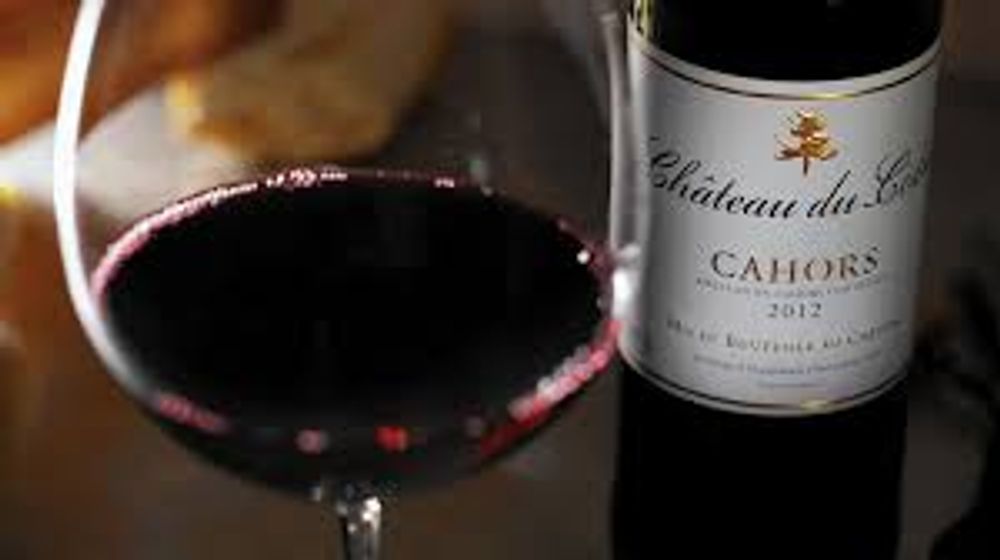
It may not be particularly out there, but for some customers, some of France’s wine regions are relatively unknown
And while France could never claim to be an undiscovered wine region, some customers have never ventured out of their comfort zones, always falling back on their old Bordeaux or Burgundy favourites. But Dickinson says wines such as Madiran or Cahors from Gascony have proved popular with customers who have perhaps never encountered these wines before.
German wines suffer from a bit of an image problem, claims Dickinson, with many diners doubtful about selecting a German wine as they often presume they are sweeter than they actually are. “German wines are difficult to understand, and having different names for different varietals is a bit off-putting to consumers. It’s hard to find good value quality German wines, but when you find the right ones they are absolutely stellar.”
“If wines provide value for money at a quality point there is no reason not to include them on the list,” he adds.
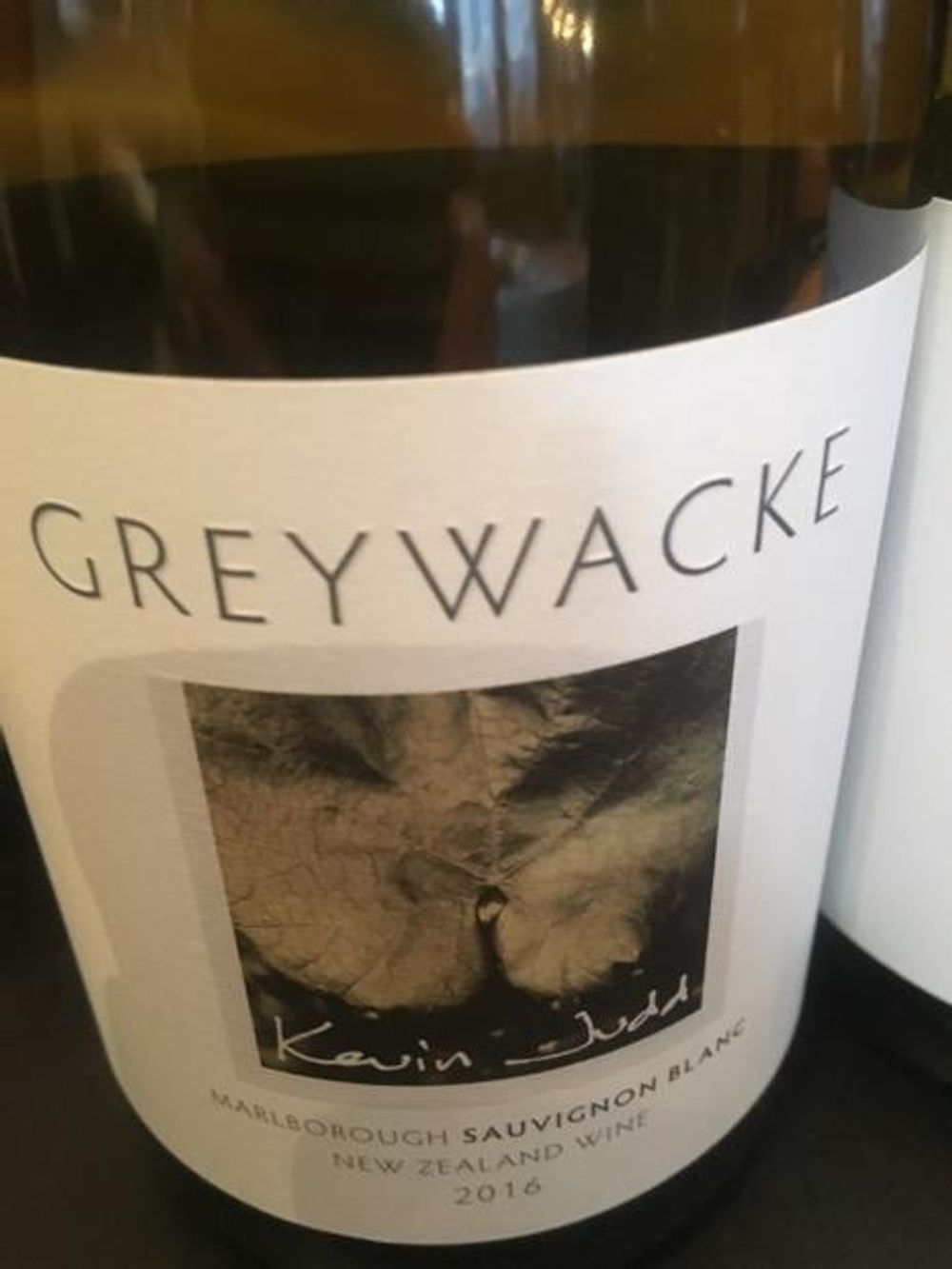
A classic Kiwi Sauvignon Blanc, Greywacke ticks all the boxes for many diners
From the New World, Dickens has updated the list with a classic Kiwi Greywacke Sauvignon but has also added a Chenin Blanc from Hawke’s Bay and a Gewürztraminer from Marlborough. “They offer something a bit different, and not what you would necessarily expect from New Zealand.”
South African demand
Demand for South African wine is also on the up, reports Dickinson, adding that at the same time they are probably amongst the most under rated of wines. He tips Franschoek as one up and coming region to keep an eye on. “They offer great value for money, and you can get some quite classical styles as well as some more innovative wines made by the likes of Waterkloof owned by Paul Boutinot. We list their Circle of Life blend of Sauvignon Blanc and Chenin Blanc which is a great balance.”
The restaurant also offers a red blend of Syrah, Petit Verdot and Merlot from Waterkloof which Dickinson describes as “a bit more on the interesting side.”
Another South African producer which Dickinson rates highly is Morgenster, listing the Stellenbosch wine maker’s River Valley Red, a 2003 Bordeaux style blend. “It’s quite lean and savoury now, which is intriguing.”
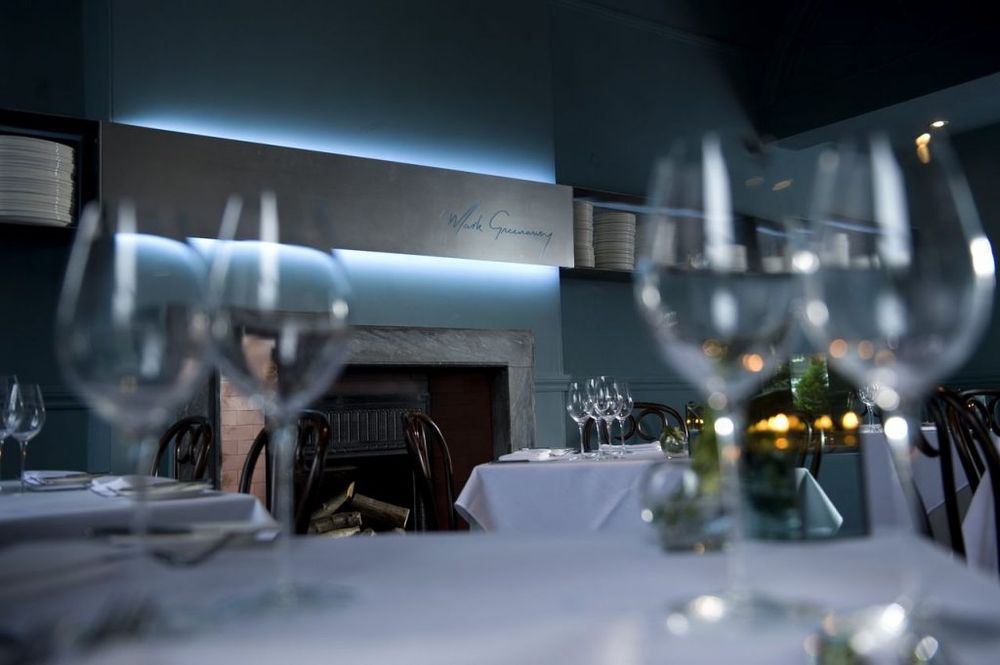
The restaurant is popular with a coterie of loyal regular customers, as well as for business lunches
Chile is another country which Dickinson believes is a rich source of interesting wines. “There are some really great wines coming out of Chile, but people always associate Chile with value at the lower end, and don’t tend to explore past the entry level. But when you start looking upwards you can find some great styles and the diversity from the country is really impressive.”
Dickinson has included an entry level Emiliana Chardonnay from Chile, as well as a Casa Silva Pinot Noir from the Colchagua Valley and a De Martino Estate Carmenere.
By the glass
Not every customer wants to drink an entire bottle, and the restaurant offers six whites, six reds, four sparkling and two roses by the glass.
Dickinson reports an increasing demand for quality rose, rather than generic table zinfandel. “It is very seasonal, along with the likes of Picpoul de Pinet from the Languedoc. Over the last five or six months we’ve sold three bottles. And now summer is here we’re selling three to four a day.”
Sparkling wine and Champagne are perennially popular, says Dickinson, with Prosecco very much in demand. “It’s an affordable way to have bubbles, and with all the connotations of luxury and celebration,”
English wine too is proving a hit amongst Dickinson’s punters. “I’m a big fan of English wines, and we stock Gusbourne and Nyetimber. They’re a slightly different style to Champagne, though definitely not lower in quality.”
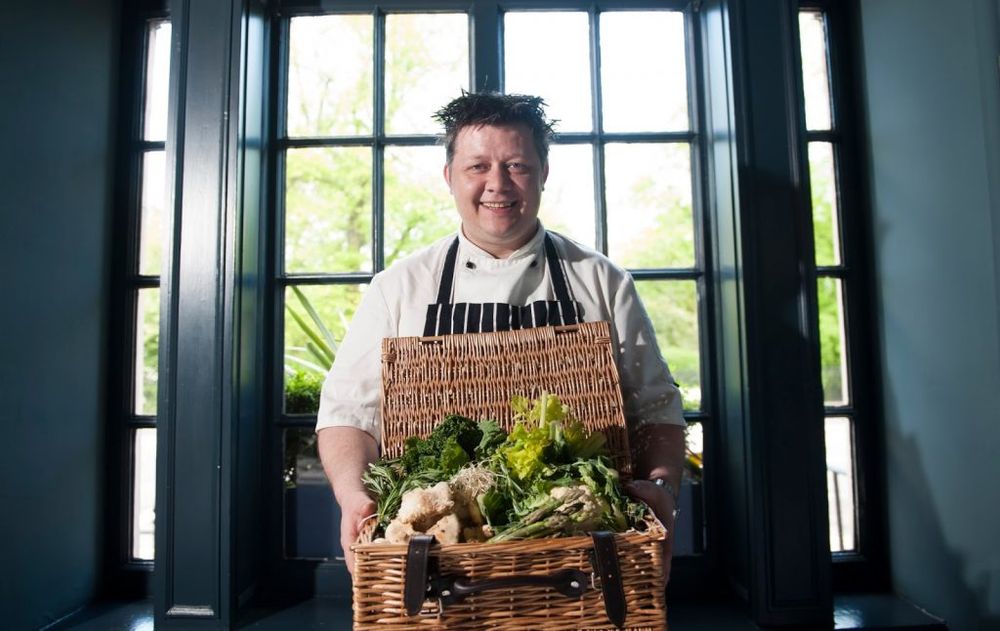
Award-winning chef Mark Greenaway has appeared regularly on TV on Great British Menu, and STV Edinburgh’s Fountainbridge Show throughout 2015.
Franciacorta from Italy is another sparkling wine that Dickinson enthuses about, which sells for £76 a bottle, while Prosecco is the entry-level sparkler on the list, coming in at £45.
An Australian sparkling Shiraz and a French sparkling rosé, from Bordeaux add additional interest to the sparkling selection, while Nyetimber’s Classic Cuvee 2010 represents the English contingent, with the Italian Ferghettina Milleedi Franciacorta coming in at £76. The entry level Champagne is from Alain Thienot, and is priced at £69, going up to Champagne Taittinger’s Comtes de Champagne 2006 at £260.
Mixed customer base
As for the restaurant customers, they are an eclectic bunch, according to Dickinson, with a stable of well-heeled regulars, as well as being a popular lunch time venue amongst Edinburgh’s business community, who can choose from a set menu at £21 for two courses or £26 for three, exclusive of wine.
And they are as likely to plump for a New Zealand Sauvignon or Chablis as an oaky Rioja. But it’s not all about the classics, and Dickinson says that diners are also open to his suggestions to try something different. “While there is a demand for the more popular grapes and styles such as Argentinean Malbec and Pouilly Fume, they are also happy to be guided by my suggestions.
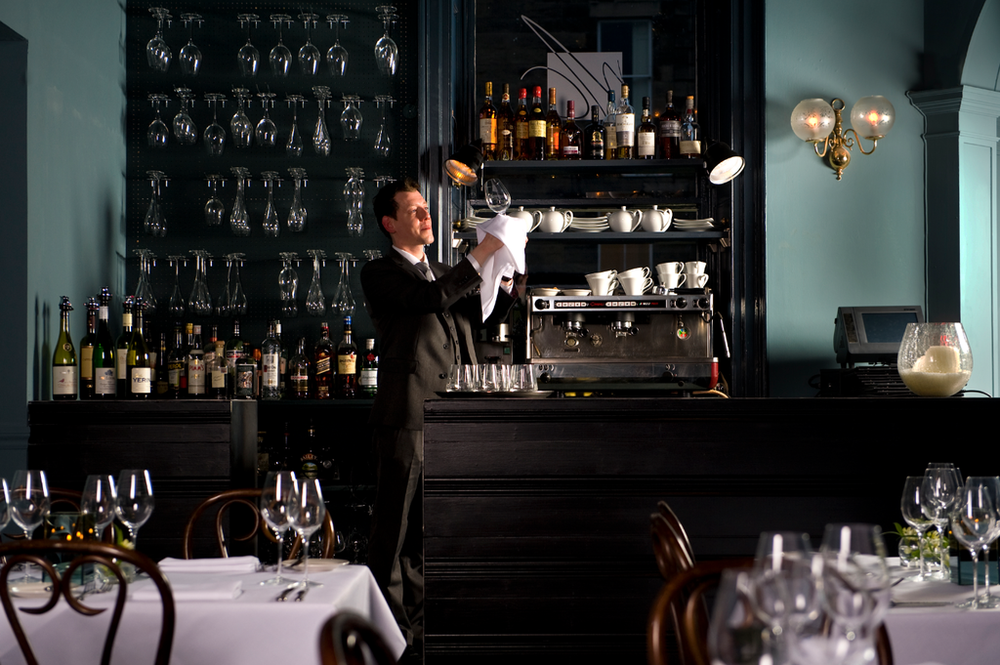
Small but perfectly formed, the restaurant’s bar is the perfect spot for a nightcap
Average spend on wine is around the £50 mark, with wines ranging from entry level sub-£30 wines up to more than £500.
However, occasional promotions such as a recent offer of £20 per person for three glasses of wine with their meal was well received.
“We get a lot of reasonably high spending groups, who often pre-order nice sets of wine.”
The restaurant also allows diners to bring their own bottles, for which they are charged a set £25 corkage, regardless of the value of the wine. “We are quite happy to offer this, though don’t really advertise the fact,” says Dickens. “And it enables me to have a taste of some amazing wines that I might not otherwise get the chance to sample!”
Mixed supplier base
Dickinson sources his wines from a variety of suppliers, including Liberty, Berkmanns Cellars, Enotria, De Burgh Wines, Vinum Terra, L’Art du Vin and Edinburgh-based Raeburn Fine Wines.
An increasing number of diners, says Dickinson, are choosing to opt for wine parings. “I think they like the fact that it takes away the decision and enables them to try stuff they’ve never had before. Varietals like Gruner Vetliner really surprise people, and well made Australian or Californian Chardonnays tend to open customers’ minds to the fact that not all Chardonnays have to be heavily oaked.”
Wine and food pairing
With a background in science and nutrition, Dickinson says his studies have helped when it comes to the challenge of pairing food and wine. “I am able to see the components of a dish, the fat, the carbohydrate, the protein, and take into account what are the most prominent features of a plate. The levels of fat, sugar and Unami are all important factors when choosing a wine to complement a dish. So for example, with chateaubriand, it’s all about the texture and as a steak with very little fat, you don’t need a lot of tannin behind the wine, so you can go for a delicate Pinot Noir or a Burgundy style wine.”
As for the beers and spirits offering, Dickinson stays true to the ethos of the restaurant, which is to use locally produced and sourced produce as far as possible. Of the nine gins stocked, seven are made in small batches in Scotland and include Darnleys View from Kirkcaldy and Rock Rose made in Thurso.
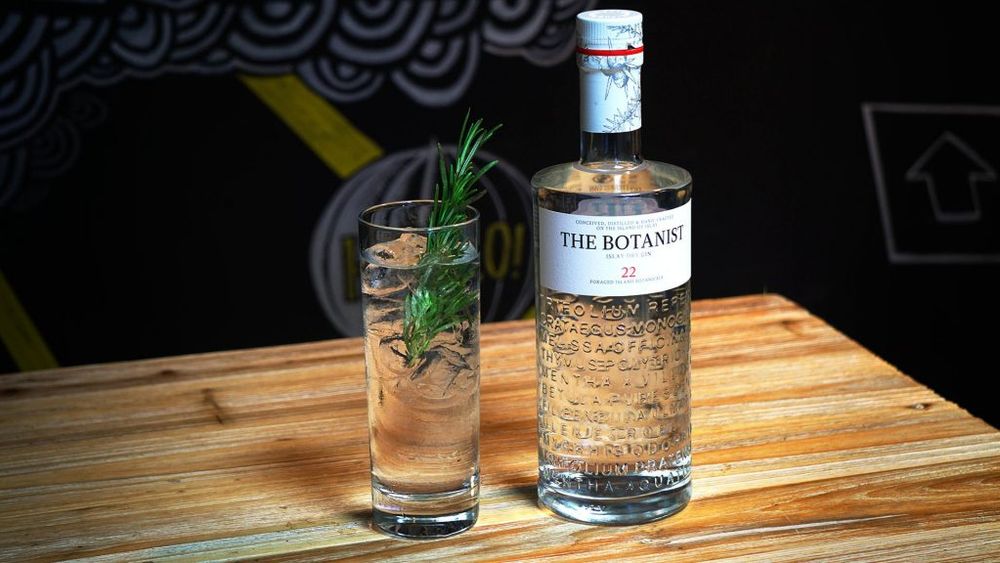
The Botanist gin, made on Islay, is one of the most popular in the restaurant
Dickinson reports that gin is by far the most popular spirit, with the Botanist made on Islay being the best seller. “Gin and tonic is the most popular aperitif by far, followed by sparkling wine,” he confirms.
“There’s a real gin explosion in Scotland at the moment, and many whisky producers have been branching out into gin while they wait for their whisky to come to market.”
Whisky range
Of course, a good Scottish restaurant wouldn’t be worthy of the name if it’s whisky collection wasn’t up to scratch, and Mark Greenaway’s is certainly no exception. It offers 34 single malts, with a good mix from the Highlands and Islands, Speyside and the Lowlands. The most popular is probably Glenmorangie, according to Dickinson, which he attributes to customers’ familiarity with the brand.

Tempest beer, made just down the road in the Borders, is one of the five beers – all from Scotland – that is on offer
Most of the beers available at the restaurant are also produced north of the Border, and includes names such as St Andrew and Tempest.
While Dickinson has clearly made his mark on the restaurant, he is not one to let the grass grow under his feet. With his WSET level two under his belt he is now in the process of trying to find the time – and the funding – to sit level three.
“As long as I can keep progressing with the business, and offering our customers great wines with good value for money, as well as introducing them to new wines, I’ll be happy.”
